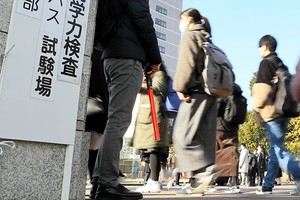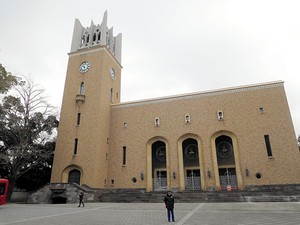THE ASAHI SHIMBUN
February 2, 2021 at 19:11 JST
 Seven days’ worth of food and drinks, including bottled water, snacks and instant noodles, which the Tokyo metropolitan government distributes to COVID-19 patients recuperating at home (Provided by the Tokyo metropolitan government)
Seven days’ worth of food and drinks, including bottled water, snacks and instant noodles, which the Tokyo metropolitan government distributes to COVID-19 patients recuperating at home (Provided by the Tokyo metropolitan government)
On New Year’s Day, an 18-year-old university student with COVID-19 was fighting to breathe, curled up in bed in the Tokyo apartment where she lives by herself, her body wracked all over with pain and severe numbness.
She is not alone. Many COVID-19 patients living on their own in the capital are left to fend for themselves at home while battling the disease due to a shortage of hospital beds and health care workers that has resulted from the recent surge in infections.
The cumulative number of COVID-19 cases topped 100,000 on Feb. 1 in Tokyo, where single-person households account for about 47 percent of all households.
With growing fear that she could die if her condition did not improve, the woman called the Tokyo metropolitan government’s consultation center for COVID-19 patients whose condition has worsened while recuperating at home.
It took her more than 30 minutes to get through to a staff member. She then asked the person if she could receive inpatient treatment or recuperate at a hotel. But the consultation center employee told her that she was ineligible as she was “fit enough to make a phone call.”
The woman then broke down, sobbing in bed.
She had tested positive for the novel coronavirus two days before calling the consultation center. A public health center instructed her to recuperate at home since she did not have symptoms other than a fever of around 37.5 degrees.
The public health center also told her that she would soon recover because she was young, the woman said.
SURVIVING ON JELLY AND WATER
But her condition suddenly worsened. She kept focused on controlling her breathing all day long for about four days. She was also feeling heavy in the stomach and could only consume jelly and water that her parents, living outside Tokyo, ordered through an online shopping site for delivery to her home.
The public health center had told her that it would call her to check on her condition, but she had not heard from them. She kept in touch with her parents on the Line messaging app, but they were unable to immediately come to her assistance even in the event of an emergency.
The situation led her to become overwhelmed by a growing sense of anxiety and despair.
Fortunately, however, her symptoms eased several days later.
Under the health ministry’s directive, COVID-19 patients are no longer required to rest at home or at other accommodation facilities if 10 days have passed since they first developed symptoms and it has been 72 hours since their symptoms were alleviated.
The public health center called the woman on Jan. 7, 10 days after she developed symptoms, to give her permission to go out from the following day. Now she is returning to the life she had before contracting the virus, but still has an impaired sense of taste and smell.
The woman said she understood that hospital beds for COVID-19 patients are in short supply due to the recent spike in infections, but lamented the lack of support from public health officials.
“I felt like they were taking my infection lightly, assuming that young people don't become seriously ill,” she said. “I wanted them to provide more support to patients living alone.”
MORE THAN 3,000 ON BED WAITING LIST
A total of 26,130 COVID-19 patients were recuperating at home in Japan as of Jan. 27, according to the health ministry. The figure has surged with the spread of the virus and nearly tripled over the past month.
The number is particularly high in Tokyo, with 4,692 patients resting at home as of Feb. 1, according to the Tokyo metropolitan government. The capital also has 3,472 patients waiting for admission to a hospital or an accommodation facility to recuperate, mainly due to no hospital beds being available to treat them.
How to deal with patients whose condition has worsened while resting at home has proven a major challenge. Numerous patients were reported to have taken a sudden turn for the worse while recuperating at home. A total of 18 had died in such circumstances in Tokyo by January's end.
The incidents prompted the Tokyo metropolitan government to step up monitoring of and support for patients resting at home.
The metropolitan government has been monitoring the condition of the patients via Line, while distributing food items to them, such as water and instant noodles. It has also kept the telephone consultation center operating around the clock. The government had provided these measures only in some areas, but expanded them to cover all parts of the capital on Jan. 25.
(This article was written by Sokichi Kuroda and Yuji Masuyama.)




















A peek through the music industry’s curtain at the producers who harnessed social media to help their idols go global.
A series based on diplomatic documents declassified by Japan’s Foreign Ministry
Here is a collection of first-hand accounts by “hibakusha” atomic bomb survivors.
Cooking experts, chefs and others involved in the field of food introduce their special recipes intertwined with their paths in life.
A series about Japanese-Americans and their memories of World War II